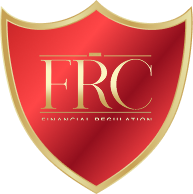As sustainability becomes a central focus for businesses and investors, the role of corporate boards in shaping and overseeing Environmental, Social, and Governance (ESG) strategies has grown increasingly important. In the financial sector, particularly in investment banks, boards are tasked with ensuring that ESG principles are integrated into the company’s overall strategy and risk management framework. Effective board oversight of ESG not only enhances a company’s reputation but also positions it to meet regulatory requirements, manage risks, and achieve long-term value creation.
This article explores the responsibilities of corporate boards in driving ESG strategies, with insights from the banking sector, where sustainability is becoming a key factor in decision-making.
In recent years, ESG has emerged as a critical factor in corporate governance. Investors, regulators, and customers are placing increasing pressure on companies to adopt sustainable business practices that go beyond financial performance. As a result, boards of directors are now expected to take an active role in overseeing the development and execution of ESG strategies.
In the banking sector, ESG is particularly important as financial institutions face growing scrutiny over their role in financing environmentally harmful activities, such as fossil fuel projects, and their social impact through labour practices and corporate governance.
Boards of directors play a crucial role in ensuring that ESG strategies are effectively developed, implemented, and monitored. Below are the key responsibilities that boards must fulfil to promote strong ESG performance.
One of the primary responsibilities of the board is to set the company’s ESG vision and long-term strategy. This involves defining the company’s sustainability objectives, identifying the key ESG risks and opportunities, and aligning these goals with the overall business strategy. The board must ensure that the company’s ESG strategy is not treated as an afterthought but is integrated into the core business model.
Best Practice: Boards should engage in regular discussions about the company’s ESG goals and ensure that these goals are aligned with broader industry standards, such as the Sustainable Development Goals (SDGs) or the Paris Agreement on climate change.
To promote accountability and transparency, boards must establish robust governance structures that support the company’s ESG initiatives. This includes forming ESG committees, assigning specific ESG responsibilities to board members, and ensuring that senior executives are held accountable for delivering on ESG targets.
Example: Some banks have established dedicated Sustainability Committees at the board level to oversee ESG performance and provide guidance on sustainability initiatives. These committees are responsible for monitoring ESG risks and ensuring that the company adheres to its sustainability commitments.
Best Practice: Boards should appoint members with expertise in ESG to ensure that sustainability is fully integrated into the company’s governance framework. This may involve recruiting directors with experience in environmental science, social impact, or corporate governance.
Effective ESG strategy requires a comprehensive approach to risk management. Boards must ensure that the company’s ESG risks, such as climate change, regulatory changes, and social responsibility issues, are identified, assessed, and mitigated. This involves integrating ESG risks into the company’s broader risk management framework and ensuring that these risks are regularly reviewed and reported.
Example: Many banks are now incorporating climate-related financial risks into their overall risk management frameworks, in line with recommendations from the Task Force on Climate-related Financial Disclosures (TCFD). Boards are responsible for overseeing these efforts and ensuring that the company is adequately prepared for climate-related risks.
Best Practice: Boards should work with risk management teams to develop scenario analyses and stress tests that assess the impact of ESG risks, particularly climate risks, on the company’s operations and financial performance.
Transparency and accountability are critical for ensuring the success of ESG strategies. Boards must ensure that the company’s ESG performance is regularly monitored and reported to stakeholders, including investors, regulators, and customers. This involves reviewing sustainability reports, ensuring compliance with ESG disclosure requirements, and providing feedback on the company’s progress toward meeting its ESG goals.
Best Practice: Boards should adopt internationally recognised ESG reporting frameworks, such as the Global Reporting Initiative (GRI) or the Sustainability Accounting Standards Board (SASB), to ensure consistency and transparency in ESG reporting.
To drive accountability at the executive level, many boards are now linking executive compensation to the achievement of ESG goals. This ensures that senior management is incentivised to prioritise sustainability and align their decision-making with the company’s ESG objectives.
Example: Some banks have introduced ESG performance metrics into their executive compensation packages, tying bonuses to the achievement of targets related to carbon reduction, workforce diversity, or community investment.
Best Practice: Boards should structure executive compensation packages to reward both short-term financial performance and long-term ESG goals. This aligns the interests of management with those of shareholders and other stakeholders.
The banking sector offers valuable insights into how corporate boards can effectively oversee ESG strategies. Many of the world’s leading banks have made significant strides in integrating ESG into their governance frameworks, providing examples of best practices for other industries to follow.
Banks are particularly exposed to climate-related risks due to their financing of high-carbon industries, such as fossil fuels. To address these risks, many banks have integrated climate risk into their governance frameworks, with boards playing an active role in overseeing the bank’s climate strategy.
Example: Major global banks such as HSBC and BNP Paribas have established board-level Sustainability Committees to oversee their climate strategies, monitor climate-related risks, and ensure alignment with global climate goals.
Best Practice: Banks should ensure that climate risks are integrated into the company’s overall risk management framework and that the board is regularly updated on the progress of climate-related initiatives.
Effective stakeholder engagement is essential for ensuring that ESG strategies are aligned with the expectations of investors, customers, and regulators. Many banks have implemented stakeholder engagement programs to gather feedback on their ESG performance and ensure that their sustainability initiatives address key concerns.
Example: Barclays has implemented a comprehensive stakeholder engagement program that involves regular consultations with investors, environmental groups, and community organisations to gather feedback on its ESG strategy.
Best Practice: Boards should actively engage with stakeholders to understand their concerns and priorities regarding ESG. This ensures that the company’s sustainability efforts are responsive to the needs of its stakeholders.
Banks are increasingly recognising that ESG is not just a compliance issue but a key driver of long-term business success. Boards are responsible for ensuring that ESG is fully integrated into the company’s long-term business strategy, rather than being treated as a separate initiative.
Example: UBS has integrated ESG into its core business strategy, with the board of directors overseeing the development of sustainable finance products, such as green bonds and sustainability-linked loans, that align with the bank’s ESG goals.
Best Practice: Boards should ensure that ESG is embedded in the company’s long-term strategy, with a focus on creating value for shareholders and stakeholders through sustainable business practices.
The active involvement of corporate boards in ESG strategy offers numerous benefits for companies, investors, and society. These benefits include:
Companies with strong ESG governance are more likely to earn the trust of investors, customers, and regulators. By demonstrating a commitment to sustainability and ethical leadership, companies can enhance their reputation and build long-term relationships with key stakeholders.
Boards that integrate ESG into their governance frameworks are better positioned to identify and mitigate risks related to climate change, regulatory changes, and social responsibility. This improves the company’s resilience and ability to navigate complex global challenges.
Companies that prioritise ESG are better positioned to create long-term value for shareholders and society. By aligning ESG with business strategy, boards can drive innovation, enhance operational efficiency, and improve overall business performance.
The role of corporate boards in overseeing ESG strategy is becoming increasingly important as companies face growing pressure to adopt sustainable business practices. By setting the company’s ESG vision, overseeing risk management, and ensuring transparency in reporting, boards play a critical role in promoting accountability and long-term sustainability. In the banking sector, where ESG risks are particularly prominent, strong board oversight is essential for ensuring that companies meet their sustainability commitments and create long-term value for shareholders.
Through the Financial Regulation Courses' Professional ESG Advisor Certificate, professionals can gain the expertise needed to support boards and companies in developing and overseeing effective ESG strategies, ensuring that sustainability is embedded in corporate governance frameworks.
Gain insights into board-level ESG strategies with the ESG Advisor Certification.
Be the first to know about new class launches and announcements.


Financial writer and analyst Ron Finely shows you how to navigate financial markets, manage investments, and build wealth through strategic decision-making.
